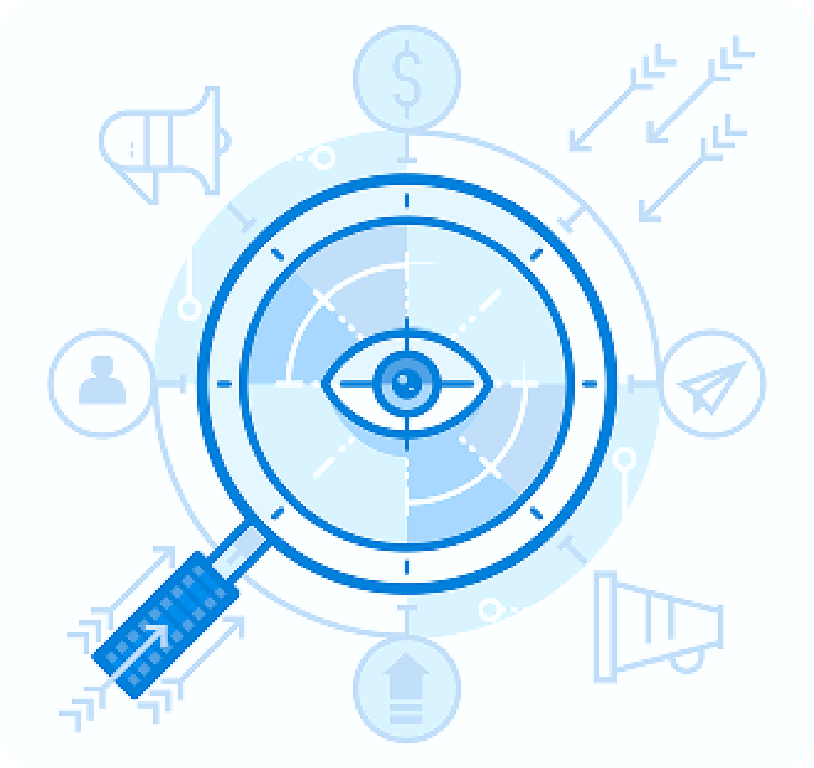Can your company really spot the gaps that turn a routine process into a costly risk?
We help organizations get a clear picture of rules, risks, and protections that matter to business leaders and IT teams.
Our team aligns governance, processes, and systems to applicable requirements and ethical standards. We translate complex information into practical steps that reduce fines, protect customer trust, and boost resilience.
We assess policies, procedures, controls, and monitoring end to end. Then we map findings to business outcomes so companies prioritize fixes that cut cost and risk.
By integrating cybersecurity from day one, we make data protection (access, encryption, logging) part of the same management program that drives regulatory adherence. We also work with your management and technical teams to set ownership, timelines, and resources for each remediation effort.
To learn how this approach scales across industries, visit MegaplanIT for proven toolkits and frameworks used by experienced practitioners.
Key Takeaways
- We create an actionable picture of risk across your organization.
- Programs balance risk reduction with business agility and tangible benefits.
- Assessments tie practices and controls to measurable business outcomes.
- Cybersecurity and regulatory requirements are integrated from the start.
- We deliver standardized toolkits and audit-ready documentation.
- Ownership, timelines, and resources are defined for clear accountability.
Why Compliance Analysis Matters Now in the United States
Today, timely reviews must tie control strength to real business risk so leaders can act with confidence.
U.S. examiners use a risk-focused approach (CA 13-19) that spotlights inherent risk, management activity, and residual risk. Financial institutions benefit when assessments show where controls are weak and where resources should go.
We translate federal regulations and supervisory expectations into a concise picture for management and technical teams. That picture links requirements to controls and to measurable business impact.
| Focus | Benefit | Example |
|---|---|---|
| Product-level review | Targets highest compliance risk | Loan product fair-lending checks |
| Control strength testing | Shows residual risk to leaders | Transaction monitoring validation |
| Stakeholder engagement | Aligns operations and oversight | Board-ready risk summaries |
- We quantify risks at product, service, and activity levels so companies avoid diffuse efforts.
- We map requirements to controls and document how management reduces inherent risk to an acceptable level.
Compliance Analysis Fundamentals: Risks, Regulations, and Effective Compliance Programs
A clear risk framework helps leaders see which legal and operational gaps matter most to the business.
Defining terms: Inherent risk is the chance and impact of noncompliance before controls. Risk management covers board oversight, policies, monitoring, and internal controls scaled to company size. Residual risk is what remains after controls and should match the board’s appetite.
High-risk legal areas to evaluate include anti-corruption, AML, competition, data protection, export control, labor, and environmental law. We document these areas so a company does not miss cross-border obligations or subtle requirements.
Core frameworks (ISO 19600, IDW PS 980), U.S. DoJ guidance, the UK Bribery Act, and the interagency rating system agree: a comprehensive compliance risk review is foundational to an effective program.
Working example: improving transaction controls reduced a product-level rating from high residual risk to moderate within one quarter, showing how strengthened controls move risk at both business and enterprise levels.
| Element | What We Check | Outcome |
|---|---|---|
| Inherent risk | Product complexity, volume, vendor reliance | Risk scoring by product |
| Risk management | Governance, policies, MIS, monitoring | Formal ratings: strong/satisfactory/weak |
| Residual risk | Control design & operating effectiveness | Acceptable level aligned to appetite |
How to Conduct a Compliance Analysis Step by Step
We start by scoping which products, services, and third parties matter most to your organization. This step sets priorities so teams focus on material risk and likely harm.

Scope the process
Inventory products, business lines, services, and vendors. Rank items by regulatory complexity, customer volumes, and vendor dependence.
Identify inherent risks
Look for factors such as regulatory change, product maturity, volume, and fair lending indicators (underwriting, pricing, marketing, redlining, steering).
Assess risk management
Test governance, policies, procedures, training, controls, monitoring, MIS, and change management to confirm they work in practice.
Determine residual risk & map requirements
Evaluate control design and operating effectiveness against board appetite. Trace each requirement to a specific control, and note gaps.
Action planning & review cadence
Assign owners, allocate resources, set timelines, and state expected impact. Maintain continuous monitoring, periodic audit, and re‑assessment after changes.
| Step | Primary Focus | Deliverable |
|---|---|---|
| Scoping | Products, lines, third parties | Ranked inventory |
| Risk ID | Inherent factors, fair lending | Risk register |
| Controls Review | Policies, procedures, monitoring | Control test results |
| Action Plan | Owners, resources, timelines | Remediation tracker |
Integrating Cybersecurity into Compliance Risk Management
We merge security engineering with risk management so technical safeguards map directly to business and regulatory requirements. This approach reduces gaps and creates audit-ready evidence across products and services.
Data protection controls
We integrate role-based access, encryption in transit and at rest, centralized logging, and system-level controls into the risk program. These protections ensure that data and information handling meet regulatory expectations.
Incident response readiness
We review playbooks, breach notification workflows, and lessons-learned processes. The goal is to confirm the company can meet reporting timelines, preserve evidence, and recover operations with minimal business risk.
Change triggers and testing
We evaluate triggers such as new regulations, fintech partnerships, major upgrades, and cloud adoption. We test automated systems and identify where manual checkpoints should remain to prevent control failures during transitions.
- We validate whether policies and procedures link to technical controls and monitoring so issues are detected quickly.
- We align control ownership with management and operational teams for clear escalation paths.
| Focus | What We Test | Outcome |
|---|---|---|
| Access & Encryption | Role mapping, key management, transit/rest encryption | Evidence of protection and reduced data risk |
| Logging & Monitoring | Central logs, alerting thresholds, retention | Faster detection and audit trails |
| Incident Playbooks | Notification steps, evidence handling, lessons learned | Regulatory-ready response and improved resilience |
Operationalizing an Effective Compliance Program for Companies
Operational strength depends on defined roles, timely reporting, and an audit-ready evidence trail.
Governance and oversight
We set a governance model where the board defines risk appetite and a committee oversees program execution.
Business line leaders own day-to-day processes and controls at the appropriate level of the organization.
Policies, procedures, and monitoring
We formalize policies and procedures that match product and service complexity.
Roles, evidence needs, and escalation paths are clear so monitoring and management information support decisions.
- Management reporting: Integrated dashboards track risk, compliance risk, and control metrics for stakeholders.
- Assessment cadence: Product/service/activity reviews include narrative summaries for board and examiners.
- Audit coordination: Internal audit schedules align with monitoring to validate design and operating effectiveness.
We prioritize resources to close material gaps first and sequence quick, high-impact fixes to reduce risk fast.
| Area | What We Do | Benefit |
|---|---|---|
| Governance | Board appetite, committee oversight, line ownership | Clear accountability and oversight at every level |
| Policies & Procedures | Proportional documentation, evidence requirements | Repeatable processes and fewer operational gaps |
| Reporting & Monitoring | Integrated MIS, control metrics, remediation tracking | Timely insight for stakeholders and faster remediation |
| Change Management | Triggers for laws, vendors, and product updates | Controls updated before exposure increases |
Conclusion
Our closing deliverable turns findings into prioritized workstreams with measurable milestones. We give leaders a clear picture of risk, prioritized gaps, and the specific action steps that cut impact and exposure.
We align residual risk to board-approved appetite and map requirements to control owners so the company can show design and operating effectiveness at the right level.
Regular reviews, continuous monitoring, and prompt regulator discussion when processes change preserve benefits over time and reduce future rework.
Ready to proceed? We will answer your questions, tailor scope to your context, and propose a timeline that fits leadership and regulatory deadlines so action begins immediately.
FAQ
What does “We Provide Compliance Analysis and Cybersecurity Solutions” mean for our company?
It means we evaluate regulatory requirements, operational risks, and security gaps across your organization, then design practical controls and policies to protect data and reduce legal and operational risk. We map obligations to processes, align senior management and business lines, and provide an action plan with owners, timelines, and required resources for remediation and ongoing monitoring.
Why does this work matter now in the United States?
Regulatory scrutiny and data incidents are increasing, so firms must get a clear, actionable picture of risks, controls, and requirements. Taking this step lowers the chance of fines, reputational harm, and operational disruption while helping stakeholders comply with industry frameworks and internal policies.
What is the business impact of an effective compliance program?
An effective program reduces financial penalties, protects customer and employee information, and creates consistent processes across departments. It improves audit readiness, supports third-party oversight, and strengthens incident response and risk reporting to the board and regulators.
How do you define inherent risk, risk management, and residual risk in plain terms?
Inherent risk is the level of threat before controls. Risk management covers the policies, controls, training, and monitoring you put in place. Residual risk is what’s left after those controls operate. We measure each to see whether remaining exposure matches your risk appetite and tolerance.
Which legal areas are typically high risk and need evaluation?
High-risk areas include anti-corruption, anti‑money laundering (AML), competition/antitrust, data protection and privacy, export controls, labor and employment law, and environmental law. We prioritize these based on your products, markets, transaction volumes, and third‑party relationships.
What frameworks and guidance do you use to structure assessments?
We reference established frameworks such as ISO 19600, U.S. interagency rating approaches, DOJ guidance, the UK Bribery Act guidance, and professional standards like IDW PS 980. These provide a consistent baseline for policies, controls, and audit evidence.
How do you scope a compliance and security review?
We prioritize by product, service, business line, and third parties. Scoping considers regulatory complexity, transaction volume, vendor reliance, and business change. That focus ensures efficient use of resources and targeted remediation where impact is highest.
How are inherent risks identified in practice?
We analyze complexity, regulatory change, volume of transactions, vendor dependencies, and indicators such as fair lending or high‑risk geographies. This involves document review, interviews, and system data to form a defensible risk profile.
What do you assess when reviewing risk management programs?
We review policies, procedures, training programs, technical and operational controls (access, encryption, logging), monitoring and MIS (management information systems), and change management processes to test whether controls operate effectively and are documented.
How do you determine residual risk and align it with risk appetite?
After testing controls, we quantify remaining exposure and compare it to the organization’s stated risk appetite. Where gaps exist, we recommend control improvements, acceptance with compensating measures, or risk transfer strategies such as insurance.
What does mapping requirements to controls involve?
Mapping ties legal and regulatory obligations to specific policies, procedures, system controls, and monitoring activities. This exposes gaps in process, documentation, or technology and forms the basis for remediation plans and evidence for audits.
How do you create actionable remediation plans?
We produce prioritized action plans with named owners, estimated resources, timelines, success metrics, and expected impact on residual risk. Plans include policy updates, process changes, control implementations, training, and system fixes.
What review cadence do you recommend for ongoing oversight?
We recommend continuous monitoring supported by periodic audits and formal re‑assessments after significant changes or incidents. Governance should include board and compliance committee reporting and business line updates at set intervals.
How are cybersecurity controls integrated into risk programs?
We ensure data protection controls—access management, encryption, logging, and endpoint and network defenses—are tied to compliance obligations. We also integrate vendor security assessments and system‑level controls into the overall control environment.
What should incident response readiness include?
Readiness requires a validated playbook, defined roles, technical detection and logging, breach notification procedures, and post‑incident lessons learned. We test playbooks through tabletop exercises and make sure legal and communications teams are aligned.
What change triggers require re-assessment of controls?
Triggers include new regulations, fintech or vendor partnerships, major system upgrades, cloud migration, mergers and acquisitions, and material changes in product offerings. Each can alter risk profiles and control effectiveness.
How should companies structure governance and oversight?
Effective governance assigns accountability across the board, a compliance committee, and business line owners, with clear reporting to executives and the board. Regular risk reporting, audit follow‑ups, and resource allocation ensure the program remains effective.
How do you manage third‑party risks as part of the program?
We implement vendor due diligence, contract clauses, continuous monitoring, and performance metrics. Third‑party management covers security, privacy, financial viability, and compliance obligations to reduce supply‑chain exposures.
What evidence do regulators and auditors expect to see?
Regulators want documented policies, training records, control testing results, incident logs, risk assessments, board reporting, and remediation evidence. We prepare packages that demonstrate a functioning program and continuous improvement.
How do we measure the benefits of investing in these programs?
Benefits include reduced incidence of data breaches and fines, improved audit outcomes, faster incident response, better stakeholder confidence, and more predictable operational performance. We track key risk indicators and control effectiveness to quantify improvement.






